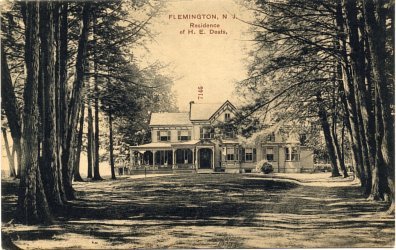Abo ut forty years ago (as one of the first stamp tasks I was involved in professionally), we consulted with the Philadelphia Library over their philatelic collection. Philadelphia had been the recipient of the Hiram Deats library which was donated to them in 1952. It still laid in cartons in the enormous main library basement when I examined it in 1971. The library consisted of nearly 1200 cartons and my job was to sort through it with two goals in mind-first, to sort out duplicates that Deats had himself and which duplicated each other and, second, to integrate the Deats donation into the Philadelphia libraries main collection, again with the goal of reducing duplication. The Philadelphia Library planned to sell off all the duplicates.
ut forty years ago (as one of the first stamp tasks I was involved in professionally), we consulted with the Philadelphia Library over their philatelic collection. Philadelphia had been the recipient of the Hiram Deats library which was donated to them in 1952. It still laid in cartons in the enormous main library basement when I examined it in 1971. The library consisted of nearly 1200 cartons and my job was to sort through it with two goals in mind-first, to sort out duplicates that Deats had himself and which duplicated each other and, second, to integrate the Deats donation into the Philadelphia libraries main collection, again with the goal of reducing duplication. The Philadelphia Library planned to sell off all the duplicates.
The Library was fortunate that we contracted to "consult" with them at a set price for the job and not hourly as once I got into the Deats library and the Philadelphia Libraries main philatelic collection (which is not in the open stacks), progress was slow because the work was so fascinating. Deats was especially strong in Nineteenth and early Twentieth Century periodicals and I spent weeks paging through works that still had uncut pages, having never been looked through before. I've never seen a good estimate, but there have had to have been hundreds, if not a thousand or more, different philatelic journals in publication between 1860-1920 and Deats had a good percentage of them. Some were printed for years, other just made one issue, but all of them were interesting and gave a unique look at our philatelic past.
The short history of philatelic writing and periodical publication is as follows: In the pre 1870 years there was very little written and saved and most of what was printed was dealer price lists. These lists became more fleshed out over time and content that was not directly sales related was added, so by 1890 there were scores of what we would today recognize as legitimate stamp magazines. Consolidation in the publishing field took hold and the period from 1920-1980 was one of decreasing competition in the philatelic periodical field , so that by 1980 there were only a small handful of magazines. The Internet again expanded the philatelic publication field. Now anyone can write about stamps and we are again close to the model of a century or more ago where there is far more written about stamps and stamp collecting than there are people to read it.
